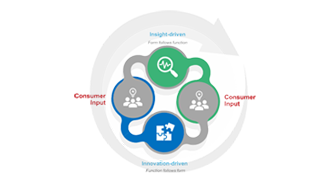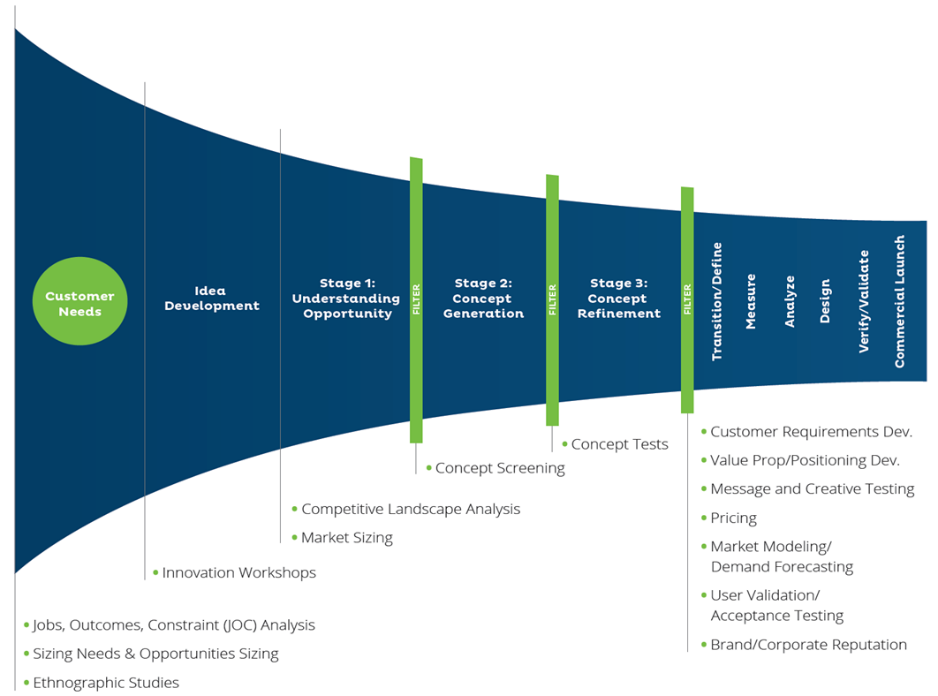
- Home
- Services
- Products
- About Us
- News
- Industries
- Resources
- Contact
Newtown Square • Philadelphia • Detroit • Cincinnati • Sacramento • Rochester • Willow Grove • Orlando • Buffalo • Chicago

In our last blog, we talked about the importance of keeping the customer at the forefront of your mind when identifying opportunities. The easiest way to do that is by continuously listening to and learning from what customers say.
Listening and learning is equally important as you innovate within your company. It’s no surprise that the most innovative companies are the most successful. To continue growing, you must develop the latest and greatest by adapting to changing trends and environments – economic, social, technological, competitive, etc.
You must innovate, and who better to help you do that than your own customers? Customer feedback, problems, and pain points create opportunities, and opportunities open the door to innovation.
The importance (and pace!) of innovation is growing every day. Companies are constantly pushed to innovate, to launch products faster, and to generate revenue quicker. However, innovation is challenging. It’s resource-intensive in terms of time and money, and a large percentage of new products end in failure. While that failure can be attributed to several reasons, a primary reason is a lack of customer-centricity.
The more you focus on your customers during the innovation process, the more bang you are going to get for your buck, and the greater chance you have for success.
Customer research that drives innovation can come from either an ongoing process, or it can be focused and specific. The more in touch with the consumer you are, the easier it is to develop and launch new products.
There are two ways that companies can integrate customer feedback into their innovation process:

The beautiful thing is that this can be an ongoing process, whether you start with the customer or you start with an internal innovation. For example, if you start with the customer, once you discover an unmet need and then design a concept, you can go back to the customer for more input to further refine, design, and perfect. Conversely, if you start with a new innovation, you can leverage customer input in the same way – to refine, design, and perfect the innovation so it has maximum impact in the market.
Another key to customer-centric innovation is to have systems in place that allow you to continuously receive feedback. When customer input is required in your processes, the discipline of being customer-centric becomes engrained into your company and employees.
Take the Stage-Gate Process, for example. This process starts wide, with unmet needs, and aims to add clarity and definition to fuzzy ideas as quickly and as easily as possible. Then, whether through internal collaboration or customer feedback, ideas and concepts are created, optimized, and tested. After each step, a “gate” is reached, where specific criteria are evaluated, and a decision on how to proceed is made. Eventually, a final product is created, and the go-to-market strategy begins. Each step in the Stage-Gate Process is not only an opportunity for research and actionable feedback, but also an opportunity to put your customer first.

If you’re looking to revamp a product or to define and gather feedback on something completely new, consider the following kinds of research:
Your innovation research needs may be broad or specific. We can help you prioritize your insight needs and move new products to market faster. In fact, we have several approaches that can tackle more than one innovation objective in one study.
Companies that put their customers first win. It’s that simple. They are more innovative and more profitable. They constantly listen to and act on what their customers say, do, and feel.
Now that you know the tips and tricks to putting your customer first while identifying opportunities and innovating, stay tuned for our next blog which centers around being customer-centric within your communication.